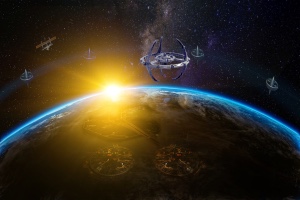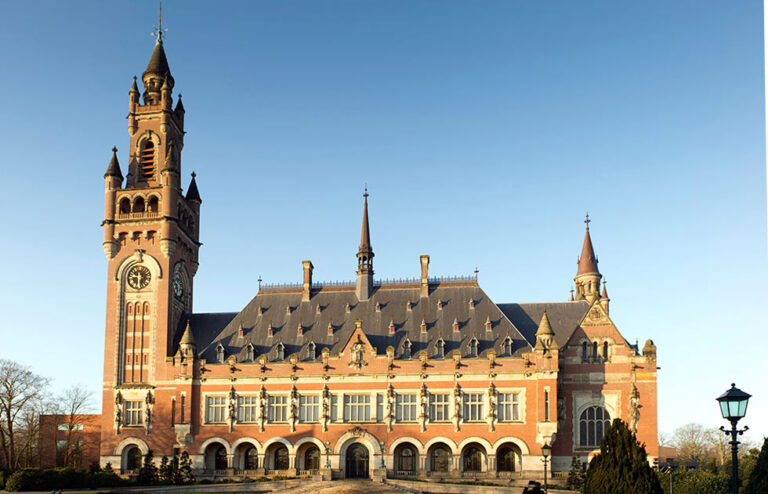
 By Sudeep Sonawane
By Sudeep Sonawane
As more than 7,000 satellites clutter Earth’s outer space, the International Astronomical Union [IAU] will launch on April 1, 2022, a centre to study and mitigate the impact of swarms of man-made satellites orbiting the planet.
The Union announced Thursday, February 3, 2022, the setting up of the Centre for the Protection of the Dark and Quiet Sky from Satellite Constellation Interference, according to a report published by Science journal.
Former Union chief and director of the new centre, Piero Benvenuti, of the University of Padua, says, “The Centre will co-ordinate efforts to study the impacts of the new swarms on astronomy, negotiate with their operators, and lobby for laws to protect the night skies.”
The Union and its two partners – the US National Optical-Infrared Astronomy Research Laboratory [NOIRLab] and the Square Kilometre Array observatory – will fund the seven-staff centre.
Thousands of satellites orbit around the Earth. They perform several science, technology, environment, telecommunications and Internet tasks, military and space research. While these satellites make daily living easy for the post-modern man, they pose several collateral risks.
IAU President Debra Elmegreen says, “The satellites leave bright traces on astronomical images, posing an existential threat to observation from the ground.”
Different groups of astronomers have attempted to understand the problem created by the clutter of thousands of satellites. They tried to mitigate the issue by working with satellite companies. Their effort was not co-ordinated. The new centre will bring all such issues under one body.
Erstwhile Soviet Union on October 4, 1957 launched Sputnik 1, the world’s first artificial satellite in space. The world has seen more than 40 countries launch around 8,900 satellites since then. Most satellites (63 per cent) ply in low Earth orbit, six per cent in medium Earth orbit, 29 per cent in geostationary orbit and two per cent in elliptical orbit.
As on January 1, 2021, 6,542 satellites were in low orbit around the Earth. From this number, 3,372 are active and 3,170 inactive. The US has 1,897 active satellites or 56.23 per cent of the total. China comes second with 412, followed by Russia 176.
As on February 28, 2021, India launched 342 satellites for 36 countries. According Indian Space Research Organisation [ISRO] data, India has launched 112 satellites since its debut with Aryabhatta in 1975.
Coronavirus and global shutdown did not affect satellite launch business last year. In 2021 a record 134 launches put either humans or artificial satellites into space, the highest in the history of spaceflight.
There were 7,389 satellites in space at the end of April 2021, according to the Index of Objects Launched into Outer Space issued by the United Nations Office for Outer Space Affairs [UNOOSA].
At the start of this year, constellation operators launched 2,800 satellites; most by Elon Musk’s SpaceX. UK-based OneWeb too launched some. This number surpasses the 2,200 satellites active at the time of Starlink’s first launch. Many satellite companies have sought approval for plans that would place around 50,000 satellites into low-Earth orbit.
NOIRLab’s Connie Walker says, “Hundreds of satellites will be visible on any night. They will have a great impact on all telescope operations.” Walker will take charge of the new IAU Centre as co-director.
The centre will assess the impact of future satellite constellations. The clutter of satellites affects survey telescopes with wide fields of view the most, studies show. For instance, the Vera C. Rubin Observatory, due for first light in 2023, will have one-third of its images ruined by satellite streaks during part of the night. Radio downlinks satellite constellations use to communicate with the ground will interfere with radio telescopes. The centre’s second task involves working with industry to develop protocols to reduce reflections and track satellite positions so telescopes can avoid them for unrestricted views.
After Starlink’s debut, astronomers worked with SpaceX to reduce the satellites’ impact by installing visors that shade reflective surfaces.
Benvenuti says astronomers are in talks with operators OneWeb and Amazon’s Project Kuiper to resolves these issues. “We’re happy with what has happened so far,” he says. “The example they made should be followed by other companies.”
The centre will write national and international laws for what regulators allow in orbit.
University of Arizona Steward Observatory’s Richard Green says, “We need to codify these good intentions, to have some backup. “We will co-operate and develop legislation to apply if necessary.”
IAU and other bodies are trying to convince the United Nations’ Committee on the Peaceful Uses of Outer Space on the importance of legislation. “We are confident we will have guidelines for companies to follow in the near future,” Benvenuti says.
University of San Francisco’ Cosmologist Aparna Venkatesan says it would be good if there were laws in the United States and elsewhere that echoed the influential US Clean Air Act.: “Many of us dream of a Clean Skies Act.”
The centre will alert and seek help from other affected groups, including amateur astronomers, Astro-tourism operators, and indigenous communities that observe the sky in their cultural practices.
University of Southern Queensland’s cultural astronomy expert on satellite constellations Jessica Heim says, “Satellite constellations interrupt our relationship with the stars.”
The IAU Centre is a good start to monitor and regulate space and positions of satellites. With governments and private space agencies competing to send humans and satellites into outer space regulation is crucial to manage the clutter of hardware.





